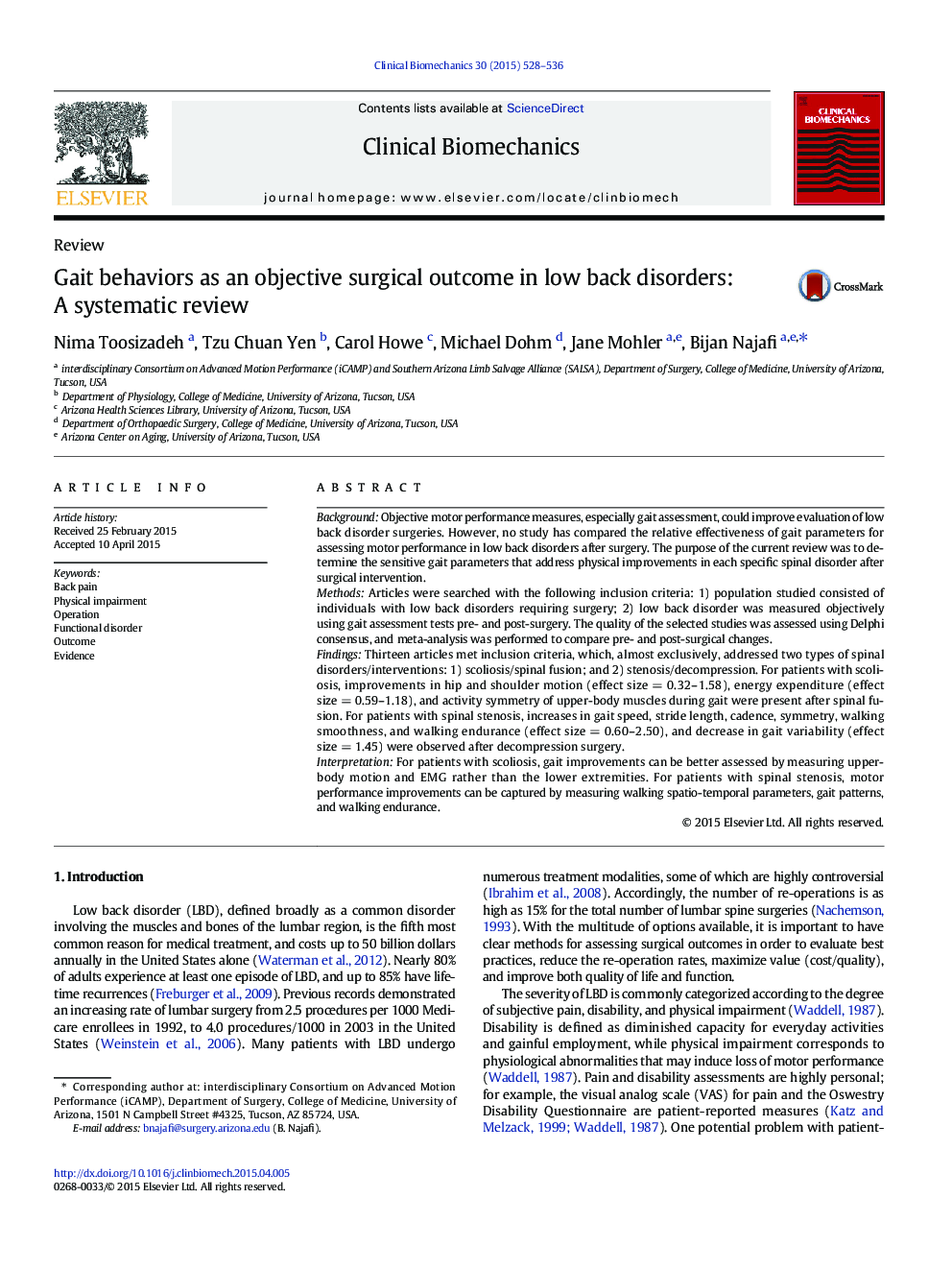| Article ID | Journal | Published Year | Pages | File Type |
|---|---|---|---|---|
| 4050234 | Clinical Biomechanics | 2015 | 9 Pages |
•The available research indicates that gait abnormalities reflect low back disorders.•We summarized gait assessment methods for evaluating low back surgeries.•Gait improvements can be better assessed by upper-body motion and EMG in scoliosis.•Assessing efficiency in executing gait can highlight improvements in scoliosis.•Gait improvements can be captured by spatio-temporal parameters in stenosis.
BackgroundObjective motor performance measures, especially gait assessment, could improve evaluation of low back disorder surgeries. However, no study has compared the relative effectiveness of gait parameters for assessing motor performance in low back disorders after surgery. The purpose of the current review was to determine the sensitive gait parameters that address physical improvements in each specific spinal disorder after surgical intervention.MethodsArticles were searched with the following inclusion criteria: 1) population studied consisted of individuals with low back disorders requiring surgery; 2) low back disorder was measured objectively using gait assessment tests pre- and post-surgery. The quality of the selected studies was assessed using Delphi consensus, and meta-analysis was performed to compare pre- and post-surgical changes.FindingsThirteen articles met inclusion criteria, which, almost exclusively, addressed two types of spinal disorders/interventions: 1) scoliosis/spinal fusion; and 2) stenosis/decompression. For patients with scoliosis, improvements in hip and shoulder motion (effect size = 0.32–1.58), energy expenditure (effect size = 0.59–1.18), and activity symmetry of upper-body muscles during gait were present after spinal fusion. For patients with spinal stenosis, increases in gait speed, stride length, cadence, symmetry, walking smoothness, and walking endurance (effect size = 0.60–2.50), and decrease in gait variability (effect size = 1.45) were observed after decompression surgery.InterpretationFor patients with scoliosis, gait improvements can be better assessed by measuring upper-body motion and EMG rather than the lower extremities. For patients with spinal stenosis, motor performance improvements can be captured by measuring walking spatio-temporal parameters, gait patterns, and walking endurance.
